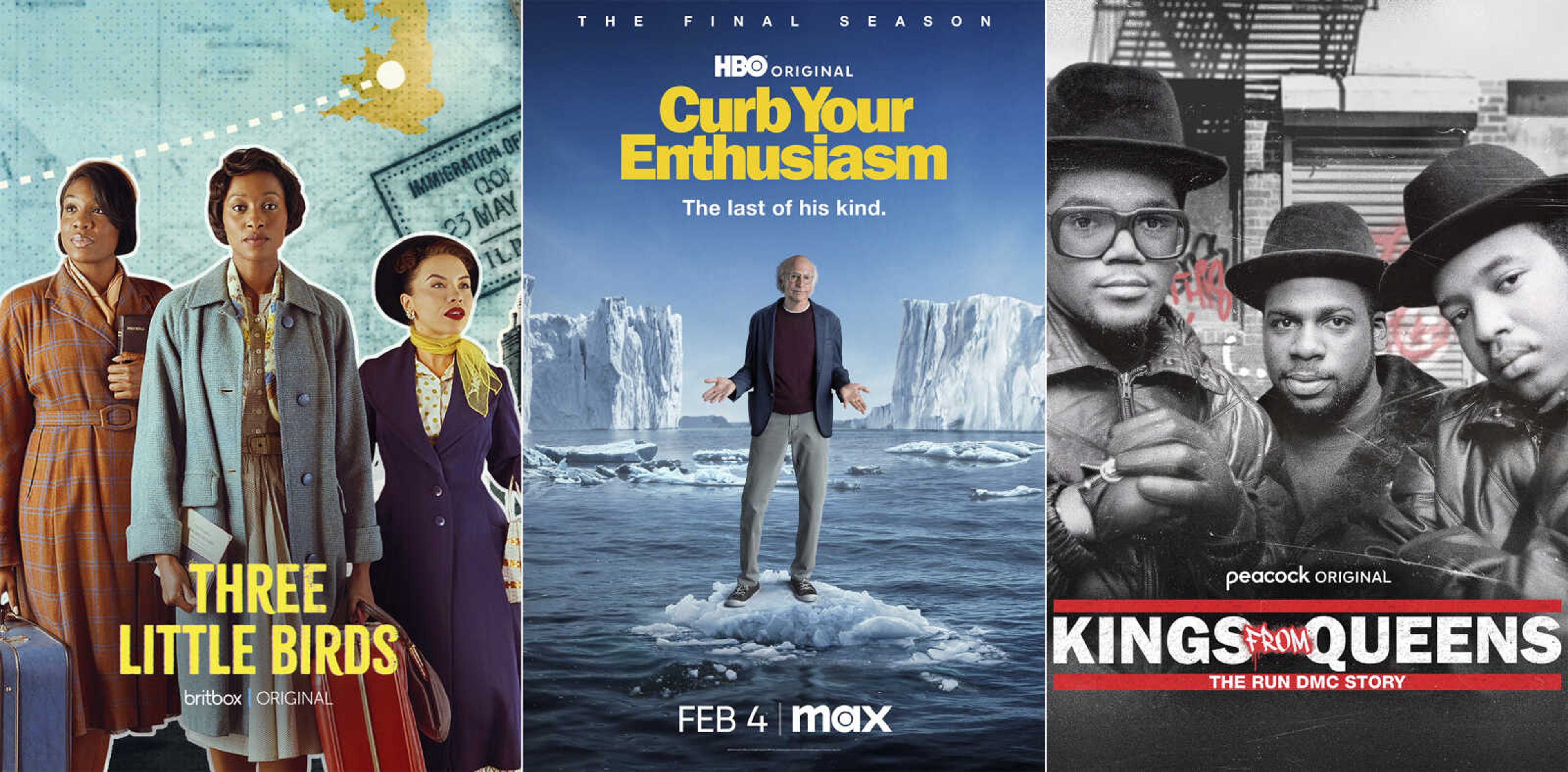Children prefer TV for their viewing, but love other devices
NEW YORK -- Grace Ellis never has known a time when you needed a TV to watch TV. The North Attleboro, Massachusetts, fifth-grader watches shows such as "Liv and Maddie," "Jessie" and "The Lodge" on her laptop, iPad and phone. "Sometimes I watch TV in the car," she said. "I have ballet every day, so I watch on the way."...
NEW YORK -- Grace Ellis never has known a time when you needed a TV to watch TV.
The North Attleboro, Massachusetts, fifth-grader watches shows such as "Liv and Maddie," "Jessie" and "The Lodge" on her laptop, iPad and phone.
"Sometimes I watch TV in the car," she said. "I have ballet every day, so I watch on the way."
She has a TV in her bedroom that isn't hooked up to cable but is perfect for watching DVDs.
And the family's flat-screen has advantages of its own.
"It's much bigger," Grace said, "and on the couch, it's comfier."
Ever since freckle-faced puppet Howdy Doody ushered in children's television nearly 70 years ago, each new generation of viewers has been treated to a growing bounty of programs on a growing selection of gadgetry.
But nothing compares to the current wave: "The generation coming up now is used to having everything at their fingertips," said Stacey Lynn Schulman, an analyst at the Katz Media Group.
Why not? From birth, theirs has been a world of video digitally issuing from every screen. For them, any of those screens is just another screen, whether or not you call it "TV."
"When they love a (show), they love it in every form and on every platform," Nickelodeon president Cyma Zarghami said.
This keeps the bosses at each children's network scrambling to make sure wherever children turn their eyes, that network's programing will be there.
Even so, it may be surprising children still watch most television on, well, a television. As in: old-fashioned, linear, while-it's-actually-airing telecasts.
A new Nielsen study found in the fourth quarter of 2016, viewers age 2 to 11 averaged about 17 hours of live (not time-shifted) TV each week. Granted, that's a drop of about 90 minutes weekly from the year before. But by comparison, children in fourth quarter 2016 spent about 4 1/2 hours weekly watching video content on other devices.
"Linear TV is still the lion's share of where kids' time is spent," said Jane Gould, senior vice president for consumer insights for Disney Channel. "But it's important for us to be in all the other places where they are, as well."
One reason: Those other outlets can pave the way for a new program's arrival on linear TV.
Gould points to "Andi Mack," an ambitious comedy-drama that debuted on Disney Channel on April 7. Weeks before it landed there, the series could be sampled on digital platforms including the Disney Channel app, Disney.com, Disney Channel YouTube, iTunes, Amazon and Google Play.
Count Grace Ellis among the legions of kids whose attention was snagged by this mega-buildup. When "Andi Mack" premiered, Grace was one of the 9 million TV viewers who tuned in.
When "Sesame Street" premiered on PBS back in 1969, it joined a bare handful of TV shows (chief among them "Captain Kangaroo" and "Mr. Rogers' Neighborhood") devoted to uplifting their young audience.
Nearly a half-century later, "Sesame Street" is going strong.
"PBS is still at its core," says Sesame Workshop COO Steve Youngwood. So is TV overall, as demonstrated by the series expanding to HBO a year ago. TV currently accounts for 40 percent of its viewership.
But "Sesame Street" has never stopped adapting to an evolving media landscape that today finds 18 percent of its audience viewing on tablets, 14 percent on mobile phones and 25 percent on other streaming devices and computers.
That includes YouTube, where its program content has been a presence for some time. Now it's getting special focus with the launch of Sesame Studios, which Youngwood describes as "a separate production unit specifically for that platform. We want to harness the power of YouTube to educate kids just like we harnessed the power of TV 50 years ago."
A half-century ago "streaming video" was an unimagined wonder. But today's TV landscape has been upended by this technology, and by major streaming-video outlets like Hulu, Amazon and Netflix as they aggressively vie for kids' (as well as everybody else's) attention.
Netflix famously doesn't disclose viewership figures. But according to Andy Yeatman, director of global kids content, "About half of our members around the world watch kids' content on a regular basis. So it's a very large, engaged audience.
"Between new and returning series last year, we added 35 new seasons of kids' originals," he says. Similar expansion is projected this year.
In a bygone era with just a handful of TV channels, kids could count on finding shows aimed at them only on Saturday mornings and weekday afternoons.
Nickelodeon's Zarghami pegs 2013-14 as the most recent turning point for kids TV, "when the landscape seriously shifted," she says, with streaming-video-on-demand providers gaining a real foothold and supplemental devices like tablets and mobile taking off.
Today, Nick has six on-demand platforms, "and we went from 500 new episodes in a season to close to 700 this season," she says.
In short, kids are flooded with just-for-them content from every direction. But even that's not enough.
"What they really look for is, to be surprised," says Disney Channel's Gould. "That's the real challenge: How do we surprise and delight them?"
Schulman of the Katz Media Group has her own prediction for where the next round of surprises might be waiting.
"Virtual reality has been hard to get off the ground, but kids are all about immersive experiences," she says. When VR is ready for them, "that's probably going to be the next big thing."
Connect with the Southeast Missourian Newsroom:
For corrections to this story or other insights for the editor, click here. To submit a letter to the editor, click here. To learn about the Southeast Missourian’s AI Policy, click here.









